It looks like you're using an Ad Blocker.
Please white-list or disable AboveTopSecret.com in your ad-blocking tool.
Thank you.
Some features of ATS will be disabled while you continue to use an ad-blocker.
27
share:
After a ''10 year quest'' a map of pathways to 100,000 galaxies has been made by scientists. Great research, showing some scale and perspective on the
position of the MW galaxy.
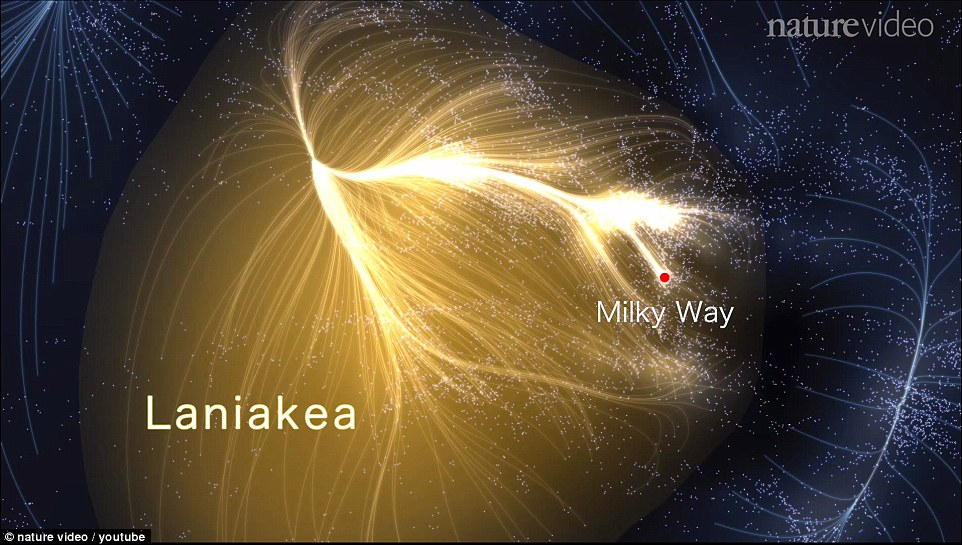
The road map to the Universe: Pathways between our Milky Way and 100,000 other galaxies charted in 10-year quest by scientists
Scientists reveal the Milky Way's position in an enormous supercluster of galaxies after 10-year quest into unknown
Huge supercluster stretches 500 million light years across and has the mass of a hundred quadrillion suns
Incredible road map reveals Earth is connected with planets, stars and asteroids an unimaginable distance away
Milky Way is on fringes of gigantic cosmic web, which has been named Laniakea - meaning 'immeasurable heaven'
Astronomers compared movement of the galaxies with water among hills and valleys to chart the supercluster
An incredible road map of the Universe showing the pathways between our Milky Way and 100,000 other far away galaxies has been revealed by scientists after a 10-year quest into the unknown.
The gigantic supercluster of stars, planets and asteroids, which stretches 500 million light years across and has the mass of a hundred quadrillion suns, has been named Laniakea - Hawaiian for 'immeasurable heaven'.
The astonishing discovery has revealed that the Milky Way - home to Earth and our solar system - is on the fringes of the enormous cosmic web.
Read more: www.dailymail.co.uk... #ixzz3URuQEIUO

edit on 15-3-2015 by theabsolutetruth because: (no reason given)
Nice thread and picture, puts things in more perspective. Do they have a 3-D version of this and not just a flat version? Thanks.
a reply to: theabsolutetruth
Gosh, we're not even on Main Street, just at the end of some insignificant dead end road within that constellation. I wonder what other species might think once they've discovered their particular location in that cluster ...
Nice find, thanks for sharing!
Gosh, we're not even on Main Street, just at the end of some insignificant dead end road within that constellation. I wonder what other species might think once they've discovered their particular location in that cluster ...
Nice find, thanks for sharing!
edit on 15-3-2015 by jeep3r because: text
Beautiful! Reminds me of Alex Grey's art...as Above so Below..
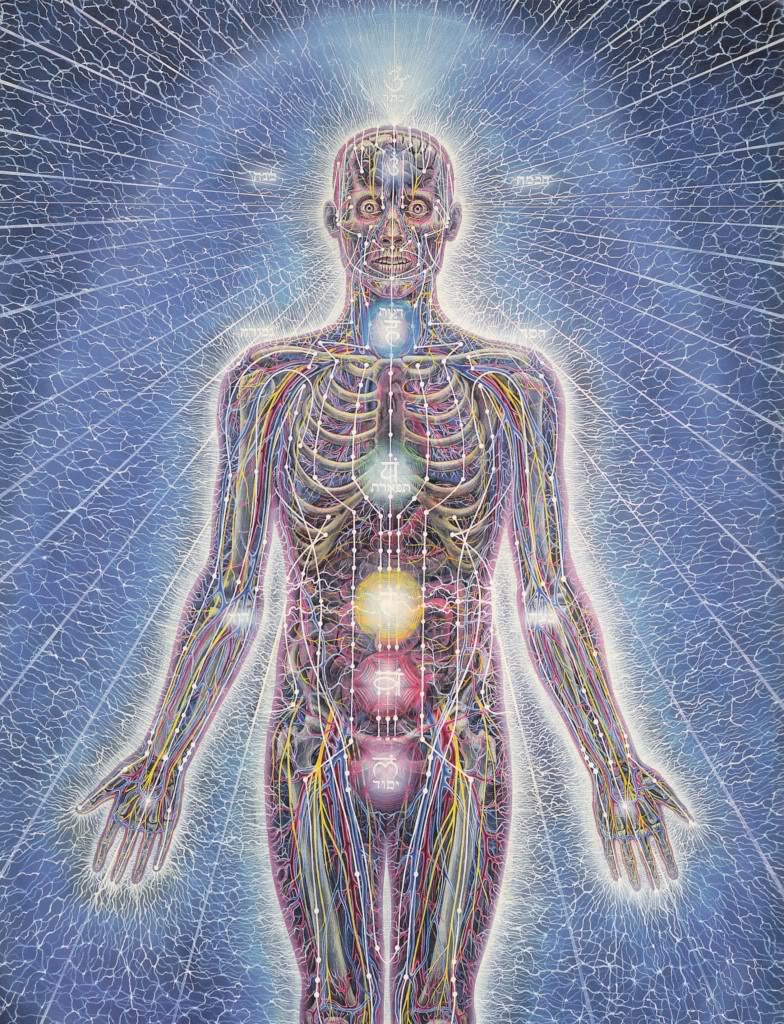

a reply to: theabsolutetruth
We are at the edge of our galactic neighbourhood, and that galaxy in turn is at the edge of the supercluster of which it is a part. Welcome to the outskirts squared!
I wonder if this map, or something derived from it, will ever be used to allow future humans to begin the work of actual exploration of the regions of space depicted therein. It would be a shame for our species to know this much about the space surrounding our galaxy, and never learn how to travel between the stars, and lay eyes on whatever is to be seen out there.
We are at the edge of our galactic neighbourhood, and that galaxy in turn is at the edge of the supercluster of which it is a part. Welcome to the outskirts squared!
I wonder if this map, or something derived from it, will ever be used to allow future humans to begin the work of actual exploration of the regions of space depicted therein. It would be a shame for our species to know this much about the space surrounding our galaxy, and never learn how to travel between the stars, and lay eyes on whatever is to be seen out there.
Then we will find our supercluster is on the edge a much larger super super cluster. ..
a reply to: Misterlondon
Very possibly!
It seems as if every time our awareness expands, every time our technology improves to allow us a better look at the universe and its contents, we realise that there are ever more layers of complexity to existence, than many of us could have imagined previously.
In this way at least, our species continues to show promise. In others, not so much. I do, however, believe that it is vital that this sort of research be supported, to the end that in the future we may be able to finally place human feet on distant worlds.
Very possibly!
It seems as if every time our awareness expands, every time our technology improves to allow us a better look at the universe and its contents, we realise that there are ever more layers of complexity to existence, than many of us could have imagined previously.
In this way at least, our species continues to show promise. In others, not so much. I do, however, believe that it is vital that this sort of research be supported, to the end that in the future we may be able to finally place human feet on distant worlds.
a reply to: AdmireTheDistance
I did a search and it didn't show anything. Looks like the same research just this one is about the pathways to other galaxies aspect rather than just a map. It focuses on the connections.
That said, I made a thread on the same research map in 2013. This Cosmic flows map also shows luminous and dark matter.
www.abovetopsecret.com...
scitechdaily.com...
Video
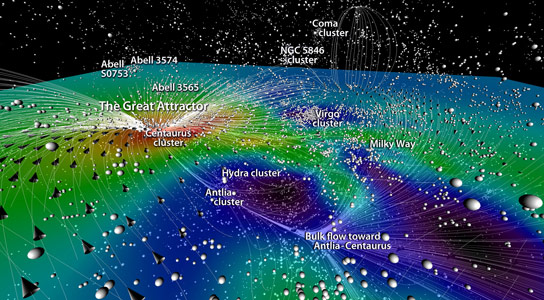
I did a search and it didn't show anything. Looks like the same research just this one is about the pathways to other galaxies aspect rather than just a map. It focuses on the connections.
That said, I made a thread on the same research map in 2013. This Cosmic flows map also shows luminous and dark matter.
www.abovetopsecret.com...
scitechdaily.com...
Video

This map shows the currents of galaxies in the universe. The galaxies (white spheres) are like dead branches in a sea. Currents carry them from an island (galaxy cluster) to the closest larger island of galaxies, the Great Attractor region. Red and yellow colors show the islands, and dark blue shows the voids that galaxies avoid by following the currents.
A new seventeen minute video shows the motions of structures of the nearby universe in greater detail than ever before, revealing a dynamic three-dimensional representation of the universe through the use of rotation, panning and zooming.
An international team of researchers, including University of Hawaiʻi at Mānoa astronomer Brent Tully, has mapped the motions of structures of the nearby universe in greater detail than ever before. The maps are presented as a video, which provides a dynamic three-dimensional representation of the universe through the use of rotation, panning and zooming. The video was announced recently at the conference “Cosmic Flows: Observations and Simulations” in Marseille, France, that honored the career and 70th birthday of Tully.
The Cosmic Flows project has mapped visible and dark matter densities around the Milky Way galaxy up to a distance of 300 million light-years.
edit on 15-3-2015 by theabsolutetruth because: (no reason given)
Whilst the area shown on the map covers 300 million light years, our local area called Laniakea.
Laniakea borders another supercluster: Perseus-Pisces.
Which is part of a far greater Universe of superclusters, many of which are far more vast.
www.vox.com...
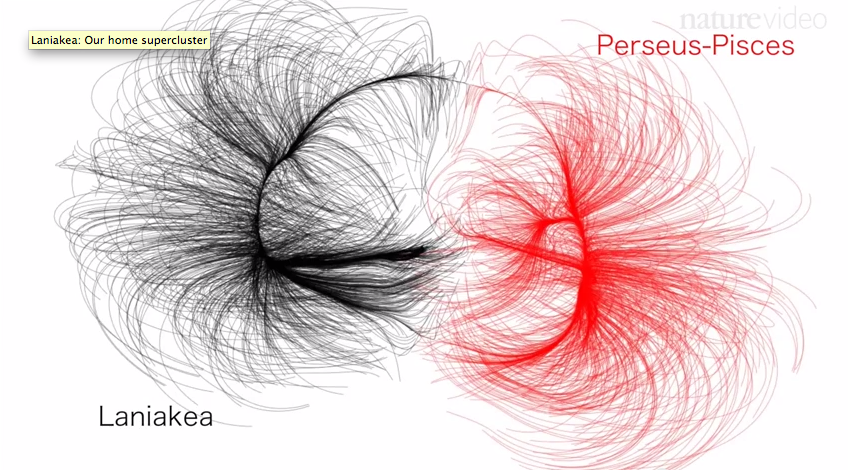
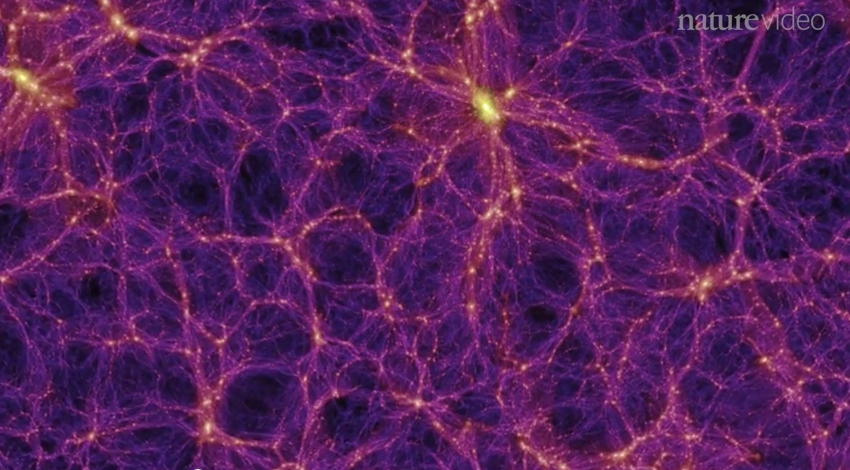
Laniakea borders another supercluster: Perseus-Pisces.
Which is part of a far greater Universe of superclusters, many of which are far more vast.
www.vox.com...
What's interesting is that this structure is much bigger than anyone had realized. Astronomers had long grouped the Milky Way, Andromeda, and other galaxies around us in the Virgo Supercluster, which contained some 100 galaxy groups.
But as Tully and his colleagues found, and as the map above shows, this Virgo Supercluster is just part of a much, much bigger supercluster — Laniakea. (The name, aptly enough, means "immeasurable heavens" in Hawaiian.)
So what happens when we zoom out? The paper notes that Laniakea borders another supercluster known as Perseus-Pisces. And the scientists defined the borders as where the galaxies are consistently diverging:

What happens if we zoom out even further? Even Laniakea and Perseus-Pisces are just one small pocket of the much broader universe. That universe consists of both voids and densely packed superclusters of galaxies. It looks something like this:

originally posted by: jeep3r
a reply to: theabsolutetruth
Gosh, we're not even on Main Street, just at the end of some insignificant dead end road within that constellation. I wonder what other species might think once they've discovered their particular location in that cluster ...
Nice find, thanks for sharing!
I guess it's going to be the difference between living in the remove provinces of Europe vs. Central Europe (Belgium, Amsterdam). In the provinces, there's probably only one five star restaurant for 100 miles. In these countries, when you go out for a meal at night, it's not "Which restaurant will we go?" it's "Which country do we going to tonight?" since there are a handful of country within miles of the border. Even in somewhere like the SE of England, people would think nothing of travelling 50 miles to a party.
Imagine living in the central core of the galaxy, there would be so many other star systems within a few light years that developing advanced speed-of-light transport would be as necessary as for us to get a driving license.
a reply to: theabsolutetruth
Thanks for the post OP, the video on the link
you provided was fascinating.
Rebel 5
Thanks for the post OP, the video on the link
you provided was fascinating.
Rebel 5
makes us seem pretty stupid as a species to kill each other in conflicts and wars....what small troll-like brains some of us have, that expresses so
much arrogance, coupled with an immense amount of narcissism.
I hope I don't gross anyone out but my first thought when I saw your image of this:
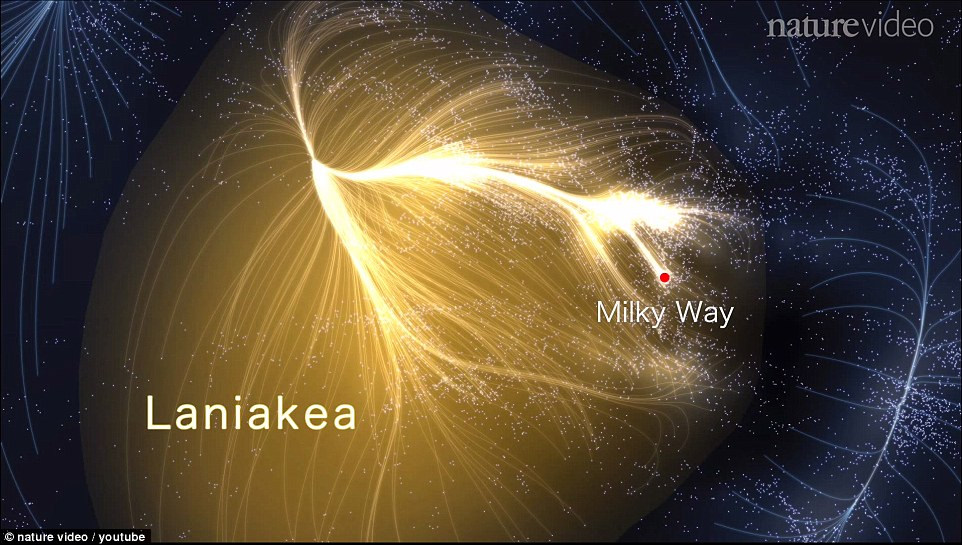
Was this

What an astounding piece of info. It is just infinity. I believe the universe is limitless.

Was this

What an astounding piece of info. It is just infinity. I believe the universe is limitless.
Amazing.
Thanks for sharing...
What is the point of it all???
We occupy less than the area of the shadow of a grain of rice in the presently researched regions of space.
much much lesser am sure.
Perhaps it's just a game in some kid's PS4 and he's watching the human species progressing at a million years/sec
Just doesn't make sense
'We are the creations of the almighty, and all of this is made for us"
/sarcasm
thanks again
Thanks for sharing...
What is the point of it all???
We occupy less than the area of the shadow of a grain of rice in the presently researched regions of space.
much much lesser am sure.
Perhaps it's just a game in some kid's PS4 and he's watching the human species progressing at a million years/sec
Just doesn't make sense
'We are the creations of the almighty, and all of this is made for us"
/sarcasm
thanks again
new topics
-
Elon Says It’s ‘Likely’ He Buys Tanking MSNBC
Political Ideology: 1 hours ago -
Montelukast affects brain, caused 5 year old to attempt suicide
Medical Issues & Conspiracies: 2 hours ago -
Jaguar Rebrand Video Causes "WTF?" Moment - Seriously Weird
Automotive Discussion: 4 hours ago -
Let's start a conspiracy
General Conspiracies: 4 hours ago -
What Joe Rogan said Vs The View
Dissecting Disinformation: 7 hours ago -
Biden's "Reckless" Decision To Escalate Russia-Ukraine War
World War Three: 8 hours ago
top topics
-
Biden's "Reckless" Decision To Escalate Russia-Ukraine War
World War Three: 8 hours ago, 16 flags -
Jaguar Rebrand Video Causes "WTF?" Moment - Seriously Weird
Automotive Discussion: 4 hours ago, 13 flags -
What Joe Rogan said Vs The View
Dissecting Disinformation: 7 hours ago, 11 flags -
Montelukast affects brain, caused 5 year old to attempt suicide
Medical Issues & Conspiracies: 2 hours ago, 7 flags -
Elon Says It’s ‘Likely’ He Buys Tanking MSNBC
Political Ideology: 1 hours ago, 7 flags -
Inca stone masonry at Sacsayhuaman, Ollantaytambo and the Sun Temple
Ancient & Lost Civilizations: 16 hours ago, 6 flags -
Let's start a conspiracy
General Conspiracies: 4 hours ago, 1 flags
active topics
-
Biden's "Reckless" Decision To Escalate Russia-Ukraine War
World War Three • 92 • : xuenchen -
Elon Says It’s ‘Likely’ He Buys Tanking MSNBC
Political Ideology • 20 • : CarlLaFong -
Well we know Putins ICBMs won't fail in their silos
World War Three • 165 • : xuenchen -
Jaguar Rebrand Video Causes "WTF?" Moment - Seriously Weird
Automotive Discussion • 9 • : Edumakated -
Is Russia Using a New Type of Beam Weapon Against Ukraine?
Weaponry • 21 • : Ravenwatcher -
Candidate TRUMP Now Has Crazy Judge JUAN MERCHAN After Him - The Stormy Daniels Hush-Money Case.
Political Conspiracies • 2168 • : matafuchs -
Inca stone masonry at Sacsayhuaman, Ollantaytambo and the Sun Temple
Ancient & Lost Civilizations • 7 • : ARM19688 -
Let's start a conspiracy
General Conspiracies • 6 • : chr0naut -
Montelukast affects brain, caused 5 year old to attempt suicide
Medical Issues & Conspiracies • 4 • : Hypntick -
Putin will warn civilians in targeted areas
World War Three • 47 • : xuenchen
27
